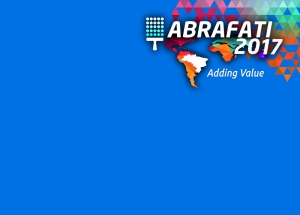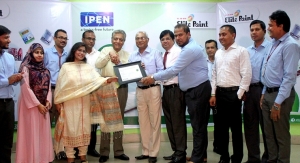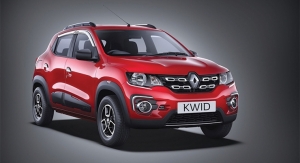Charles W. Thurston, Latin America Correspondent02.09.18
A new draft bill being readied for the Brazilian Congress would limit the permissible lead content in paint and coatings, in keeping with the region-wide effort to cut down on nominally high levels still in use by many manufacturers. The bill would update a 10-year old law on lead, and bring Brazilian standards to the level of the World Trade Organization, which was notified of the legislative action in December.
According to United Nation’s Environment’s Global Report, the “Status of Legal Limits on Lead in Paints,” about 70 percent of all countries in the world still permit manufacturers and vendors to sell paint with lead content.
Comments on the Brazilian draft are being heard by the Comissão Nacional de Segurança Química (Conasq), the national chemical safety commission, which is overseen by the Ministério do Meio Ambiente (MMA), the environment ministry. The draft bill has the support of the Brazilian paint and chemicals association, Associação Brasileira dos Fabricantes de Tintas (Abrafati), under the leadership of Antonio Carlos de Oliveira, the executive president of the organization.
The UN Environment and the World Health Organization together support the Global Alliance to Eliminate Lead Paint that has a target for all governments to ban lead in paint by 2020. Honduras, Paraguay, Abrafati, and Mexico’s Asociación Nacional de Fabricantes de Pinturas y Tintas (Anafapyt) are among members of the alliance.
Across the Latin American region, support for limiting lead in paints and coatings has come from the Federación Latinoamericana de Asociaciones de Técnicos y Fabricantes de Pinturas y Tintas (LatinPin), which was formed in 2014 as an association of national paint trade associations in the region. Now representing seven countries in Latin America, another 10 are expected to join shortly.
In September, Colombia’s national paint trade association Asociación de Técnicos Andinos en Recubrimientos (STAR), with support from LatinPin, held a workshop on lead content regulation in the association’s sub-region, including the markets in Venezuela and Peru. While technical manufacturing norms in Colombia call for lead to represent no more than one percent of the total product weight, and less than 100 parts per million, there is no corresponding law enforcing that standard.
At the STAR meeting, a research presentation suggested that there are still 11 Colombian manufacturers that use lead in formulations of paint or coatings ranging from 28,000 ppm to 190,000 ppm, and that only nine manufacturers limit lead to less than 100 ppm. Current regulatory reform is pursuing a 100 ppm limit for manufacturing.
Colombia is not alone in its lack of lead safeguards regulation in the paint and coatings industry. STAR also suggested that the Bolivia, the Dominican Republic, Ecuador, El Salvador, Guatemala, Honduras, Nicaragua, Paraguay and Peru also do not have a law limiting lead in decorative paints.
Like Brazil, countries in Latin America that need to upgrade existing legislation include: Argentina, Chile, Costa Rica, Cuba, Mexico, Panama, Uruguay and Venezuela.
The Global Alliance helped produce a webinar in April 2017 on lead paint in the 15 nation member Caribbean Community (Caricom) region, where only two countries have mandatory lead paint laws.
According to United Nation’s Environment’s Global Report, the “Status of Legal Limits on Lead in Paints,” about 70 percent of all countries in the world still permit manufacturers and vendors to sell paint with lead content.
Comments on the Brazilian draft are being heard by the Comissão Nacional de Segurança Química (Conasq), the national chemical safety commission, which is overseen by the Ministério do Meio Ambiente (MMA), the environment ministry. The draft bill has the support of the Brazilian paint and chemicals association, Associação Brasileira dos Fabricantes de Tintas (Abrafati), under the leadership of Antonio Carlos de Oliveira, the executive president of the organization.
The UN Environment and the World Health Organization together support the Global Alliance to Eliminate Lead Paint that has a target for all governments to ban lead in paint by 2020. Honduras, Paraguay, Abrafati, and Mexico’s Asociación Nacional de Fabricantes de Pinturas y Tintas (Anafapyt) are among members of the alliance.
Across the Latin American region, support for limiting lead in paints and coatings has come from the Federación Latinoamericana de Asociaciones de Técnicos y Fabricantes de Pinturas y Tintas (LatinPin), which was formed in 2014 as an association of national paint trade associations in the region. Now representing seven countries in Latin America, another 10 are expected to join shortly.
In September, Colombia’s national paint trade association Asociación de Técnicos Andinos en Recubrimientos (STAR), with support from LatinPin, held a workshop on lead content regulation in the association’s sub-region, including the markets in Venezuela and Peru. While technical manufacturing norms in Colombia call for lead to represent no more than one percent of the total product weight, and less than 100 parts per million, there is no corresponding law enforcing that standard.
At the STAR meeting, a research presentation suggested that there are still 11 Colombian manufacturers that use lead in formulations of paint or coatings ranging from 28,000 ppm to 190,000 ppm, and that only nine manufacturers limit lead to less than 100 ppm. Current regulatory reform is pursuing a 100 ppm limit for manufacturing.
Colombia is not alone in its lack of lead safeguards regulation in the paint and coatings industry. STAR also suggested that the Bolivia, the Dominican Republic, Ecuador, El Salvador, Guatemala, Honduras, Nicaragua, Paraguay and Peru also do not have a law limiting lead in decorative paints.
Like Brazil, countries in Latin America that need to upgrade existing legislation include: Argentina, Chile, Costa Rica, Cuba, Mexico, Panama, Uruguay and Venezuela.
The Global Alliance helped produce a webinar in April 2017 on lead paint in the 15 nation member Caribbean Community (Caricom) region, where only two countries have mandatory lead paint laws.













